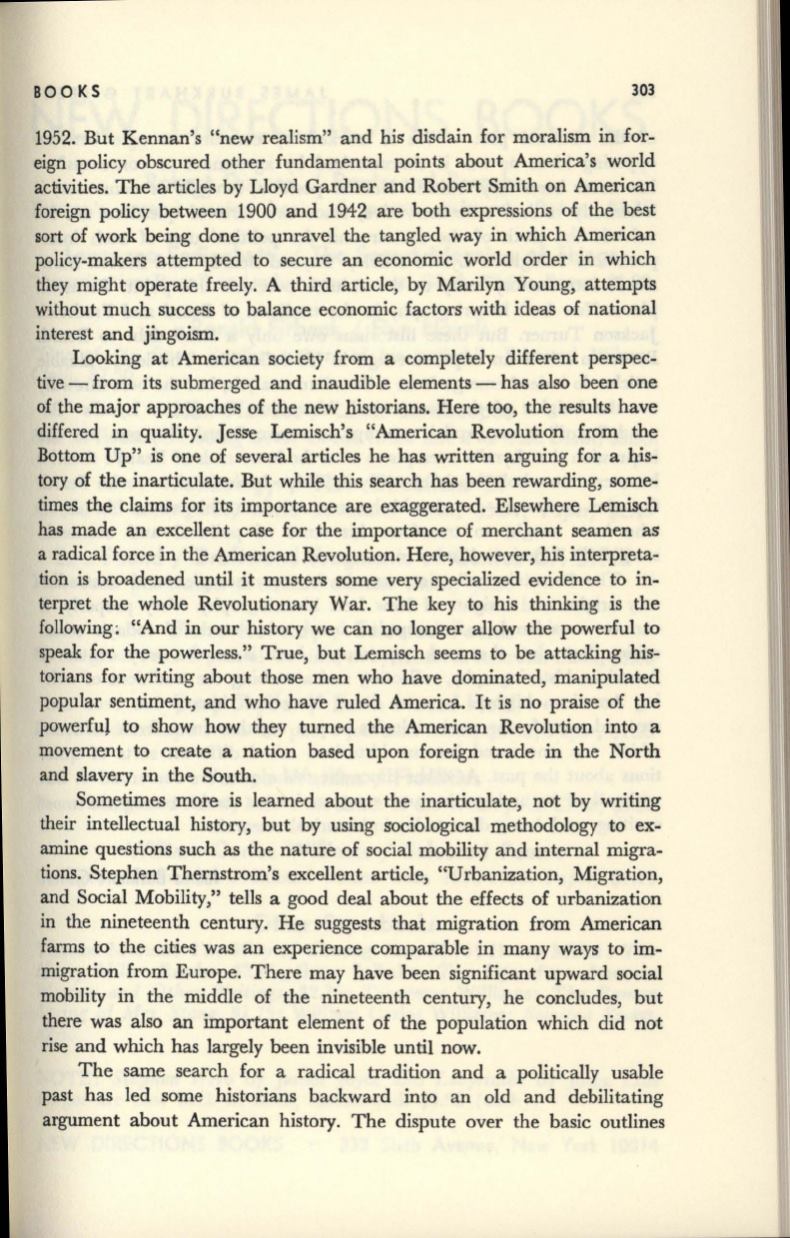
BOOKS
303
1952. But Kennan's "new realism" and his disdain for moralism in for–
eign policy obscured other fundamental points about America's world
activities. The articles by Lloyd Gardner and Robert Smith on American
foreign policy between 1900 and 1942 are both expressions of the best
sort of work being done to unravel the tangled way in which American
policy-makers attempted to secure an economic world order in which
they might operate freely. A third article, by Marilyn Young, attempts
without much success to balance economic factors with ideas of national
interest and jingoism.
Looking at American society from a completely different perspec–
tive - from its submerged and inaudible elements - has also been one
of the major approaches of the new historians. Here too, the results have
differed in quality. Jesse Lemisch's "American Revolution from the
Bottom Up" is one of several articles he has written arguing for a his–
tory of the inarticulate. But while this search has been rewarding, some–
times the claims for its importance are exaggerated. Elsewhere Lemisch
has made an excellent case for the importance of merchant seamen as
a radical force in the American Revolution. Here, however, his interpreta–
tion is broadened until it musters some very specialized evidence to in–
terpret the whole Revolutionary War. The key to his thinking is the
following ; "And in our history we can no longer allow the powerful to
speak for the powerless." True, but Lemisch seems to be attacking his–
torians for writing about those men who have dominated, manipulated
popular sentiment, and who have ruled America. It is no praise of the
powerful to show how they turned the American Revolution into a
movement to create a nation based upon foreign trade in the North
and slavery in the South.
Sometimes more is learned about the inarticulate, not by writing
their intellectual history, but by using sociological methodology to ex–
amine questions such as the nature of social mobility and internal migra–
tions. Stephen Thernstrom's excellent article, "Urbanization, Migration,
and Social Mobility," tells a good deal about the effects of urbanization
in the nineteenth century. He suggests that migration from American
farms to the cities was an experience comparable in many ways to im–
migration from Europe. There may have been significant upward social
mobility in the middle of the nineteenth century, he concludes, but
there was also an important element of the population which did not
rise and which has largely been invisible until now.
The same search for a radical tradition and a politically usable
past has led some historians backward into an old and debilitating
argument about American history. The dispute over the basic outlines


